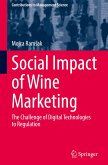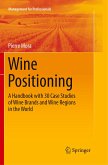Though the traditions of vine- and wine culture date back for several centuries, numerous new trends have appeared on the global wine market during the last decades. Since the 1980s, the privileged situation of Europe s wine industry has seemed to be endangered by the fast expanding New World wineries. On the saturated market, differentiation is the only way to stand out from the crowd. This struggle for individualization and differentiation is what makes marketing for wineries as essential as never before. Both Old World and New World wineries have had to respond to the changing circumstances. However, due to their structural and historic differences, they need to compete in very different ways. This study examines these distinct strategies through the example of two characteristic wineries: one from the New World region, Australia, and the other from the historic Tokaj region of Hungary.
Bitte wählen Sie Ihr Anliegen aus.
Rechnungen
Retourenschein anfordern
Bestellstatus
Storno








